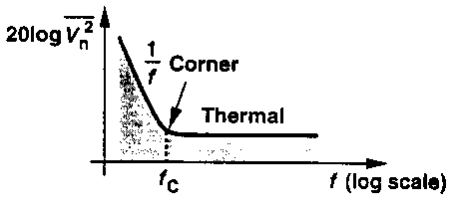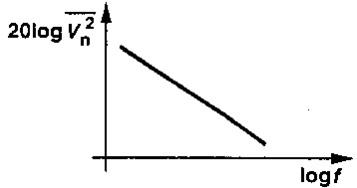This set of VLSI Multiple Choice Questions & Answers (MCQs) focuses on “Noise in MOS Devices”.
1. Noise in VLSI circuits mean:
a) Unwanted signals that arise due to vibration in the passive circuits
b) Unknown signal that limits the minimum signal level that a circuit can process with acceptable quality
c) Signal which undergoes distortion
d) All of the mentioned
View Answer
Explanation: In VLSI circuits noise limits the minimum signal level that a circuit process with acceptable quality.
2. In probability Noise is described as:
a) Random function
b) Random process
c) Deterministic function
d) Deterministic process
View Answer
Explanation: Noise is a Random Process.
3. Noise generated by independent devices are:
a) Correlated
b) Uncorrelated
c) Equal
d) None of the mentioned
View Answer
Explanation: Noise generated by independent devices are uncorrelated, eg: noise generated from resistor is not similar to noise generated from transistor.
4. The 2 types of noise that the analog systems face during signal processing are:
a) Device electronic noise and environmental noise
b) Noise due to Vibration and electronic noise
c) Passive and active noise
d) None of the mentioned
View Answer
Explanation: Device electronic noise and environmental noise affects signal processing of analog signals.
5. Thermal noise is generated from:
a) Resistor
b) Capacitor
c) Inductor
d) All of the mentioned
View Answer
Explanation: Thermal noise is due to random motion of electrons in a conductor.
6. Thermal noise is generated from MOSFET by:
a) Conduction of charge carriers in the channel
b) Electric field across the gate and channel
c) Capacitance of the gate oxide
d) Substrate bias effect
View Answer
Explanation: Thermal noise is generated due to conduction of charge carriers in the channel.
7. Thermal noise current in the MOSFET is proportional to:
a) Transconductance
b) Resistance
c) Gate voltage
d) None of the mentioned
View Answer
Explanation: Noise current I^2 = 4kTygm.
8. Flicker noise is found in MOSFET at:
a) Gate and oxide interface
b) Gate oxide and silicon interface
c) Source and substrate interface
d) Drain and substrate interface
View Answer
Explanation: The interface between Gate oxide and silicon substrate generates flicker noise.
9. Flicker noise originates due to:
a) Conduction in channel
b) Drain to Source voltage
c) Reduction in channel length
d) Dangling bonds
View Answer
Explanation: Dangling bonds generate flicker noise.
10. The average power of flicker noise depends on:
a) Thickness of oxide
b) Cleanness of the oxide silicon interface
c) Voltage on oxide
d) Length of channel
View Answer
Explanation: Depending on the Cleanness of oxide silicon interface flicker noise varies.
11. In the following graph the fc is called as:

a) Cutoff frequency
b) Threshold frequency
c) Corner frequency
d) None of the mentioned
View Answer
Explanation: None.
12. The following graph is a spectrum of which noise:

a) Thermal noise
b) Gaussian Noise
c) Flicker noise
d) None of the mentioned
View Answer
Explanation: None.
13. If VIH of the 2nd gate is lower than VOH of the 1st gate, then logic output 0 from the 1st gate is considered as:
a) Logic input 1
b) Uncertain
c) Logic input 0
d) None of the mentioned
View Answer
Explanation: Logic output 1 from first gate is considered as logic input 1 at second gate as it lies within the range.
14. Input Voltage between VIH and VOH is considered as:
a) Logic Input 1
b) Logic Input 0
c) Uncertain
d) None of the mentioned
View Answer
Explanation: None.
Sanfoundry Global Education & Learning Series – VLSI.
To practice all areas of VLSI, here is complete set of 1000+ Multiple Choice Questions and Answers.
If you find a mistake in question / option / answer, kindly take a screenshot and email to [email protected]
